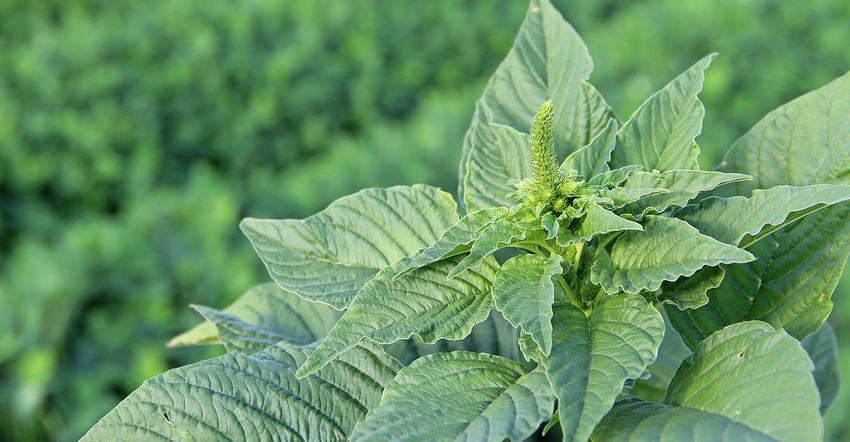
Soybean farmers in Mid-South areas close to the Mississippi River spend $46 to $56 more per acre on variable costs than the U.S. average.
The difference, says University of Tennessee Extension economist Charles Martinez, is weed control.
Martinez, assistant professor and state Extension specialist in the University of Tennessee Department of Agricultural and Resource Economics, says the cost to control resistant weeds, along with the associated costs of increased trips and wear on equipment, takes a heavy toll on farm profitability.
Martinez moved to Tennessee from Texas in December and began looking at low profit margins for Tennessee farmers.
"The net farm income for Tennessee was the worst it had ever been," Martinez says. He wanted to understand why.
Costs 'out the roof'
"In January, I started looking at soybeans and corn, the two biggest row crops in Tennessee. Soybeans are the biggest, so I started there. Variable costs are out the roof."
He says soybean farmers across the nation have witnessed dramatic price swings over the last decade. "Soybean prices peaked in 2014 but since 2016 have fallen below $10. As a result of lower prices and increased expenses, net farm income for soybean producers has been underwhelming for most producers in the Mississippi Portal region of the United States."
The Mississippi Portal includes central and western Tennessee, eastern Arkansas, the boot of Louisiana and all but the southeast corner of Mississippi — production areas in close proximity to the Mississippi River.
Martinez says production costs for the region's soybean farmers align closely with the U.S. average for most items. As he looked closer at the numbers, however, he found diesel costs to be out of sync. Farmers are not paying more per unit for diesel, he explains. They are just using a lot more of it.
"Which means producers are having to enter the field more often. What would drive the need for increased chemical application?" he wondered. "Chemical resistant weeds."
Resistant weeds
He says Palmer amaranth may be the usual suspect but adds that UTIA Extension weed specialist Larry Steckel adds jungle grass, barnyard grass, goose grass and several other glyphosate-resistant weeds and grasses to the list.
Higher costs for fuel account for only part of the problem, Martinez says.
"Since 2012 these three costs — fuel, repair, and chemical — have stayed consistently high in the region compared to the nation," he says. "Chemical and repair costs are each approximately $15 per acre higher than national averages and fuel costs are $16 to $26 per acre higher.
"If producers are having to enter the field more, they are using their equipment more," he says, "which increases the likelihood of something breaking and explains the greater repair costs for the region."
More herbicides
They also use more herbicides. Martinez says farmers he's talked to indicate they make from two to four more trips across their fields to control weeds.
Recent research showing that tank mixes of glyphosate and dicamba result in herbicide antagonism and poor control prompted a recommendation to apply those products separately, so, one more trip across the field.
How can the region's farmers bring those costs closer to the U.S. average? Martinez says they may have to change the way they grow soybeans.
Management issues
"Increased resistant weed pressure and greater corresponding control costs may force producers in the Mississippi Portal Region to look at alternative management practices as potential methods of control," Martinez says. "Producers should analyze management practices to determine if costs can be reduced and/or resistant weed control improved."
Practices to be considered include:
• Cover crops.
• Change tillage practices, depending on location within the Portal. Different states have different guidelines, Martinez says. "Tennessee is a no-till state."
• Crop rotation, he says, is important and producers might want to rethink crop choices.
• Consider alternative herbicides and make certain of the sources for fertilizer and chemicals. Cut-rate products might not be performing up to par.
Martinez says since 2014 a handful of negative influences pushed soybean prices down.
"Following the high profit margins of 2013 and 2014, the Mississippi Portal region has been below break-even levels on a per acre basis," he says.
During that period, yields were trending upward, adding to supply, and export demand lagged. Prices dropped. However, Martinez says, even with depressed prices, other areas have seen positive profit margins. Variable costs, primarily because of herbicide resistant weed control, stymie Mississippi Portal profits.
Reining in those higher weed control costs in the Mid-South may offer the best option for turning those numbers around.
About the Author(s)
You May Also Like






